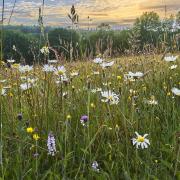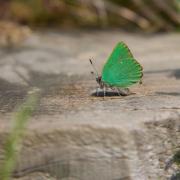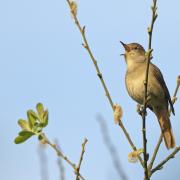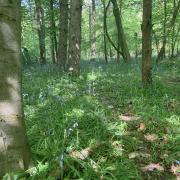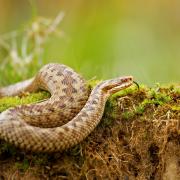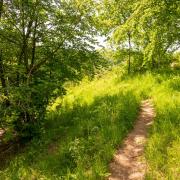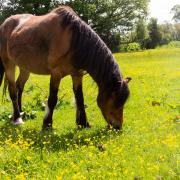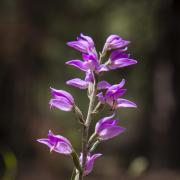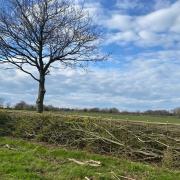The flight of a spectacular blue butterfly over the Minchinhampton and Rodborough Commons will mark the latest stage in a Cotswold conservation success story.

The Adonis Blue butterfly died out in the Cotswolds in the early 1960s but a little over a decade ago, new conservation work on the commons by the National Trust led to it recolonising the area. The National Trust had established conservation grazing on the commons originally using its herd of Belted Galloway Cattle to increase grazing on the lower slopes of Rodborough Common. The experiment was successful and the herd has been taken over by the graziers on the common.
As a result of the grazing, the limestone grassland on Minchinhampton and Rodborough Commons are well known for turning yellow with Cowslip, Horseshoe Vetch and Rock-rose flowers in May, then pink with thyme and orchids in June. Plants such as Common Rock-rose occur extensively as an underlying carpet, and there are drifts of Horseshoe Vetch, Cowslip and also Bird’s-foot Trefoil Wild Thyme and Hairy Violet. All are foodplants for the butterfly caterpillars, while the adult butterflies feed on nectar from scabiouses and knapweeds. The caterpillars of the Adonis Blue depend on the presence of Horseshoe Vetch – whose leaves are its only food source.
The butterflies seen around Minchinhampton and Rodborough include the Duke of Burgundy, Dingy Skippers, Brown Argus and Small Blue as well as the Chalkhill Blue.
The Adonis Blue, whose second brood of the year can be seen in the warm August weather, is not only an unusually attractive butterfly, but one of the Cotswolds great conservation successes. The male is a bright sky blue while the female is mostly brown with some blue veins and orange spots at the edge of her wings.

Matthew Oates, the National Trust Nature and Wildlife specialist and a renowned butterfly expert said: “It was last seen in the Cotswolds in 1962 – dying out within a decade of myxomatosis arriving which changed the grazing patterns dramatically. Its reappearance in the Cotswolds is the most impressive colonisation by a butterfly I have experienced in half a century of butterflying.
“It became known that the Adonis Blue had maintained a population on the edge of the limestone Cotswold range, near Castle Combe, north-east of Bath. The National Trust had worked to introduce conservation grazing, improving the habitats for wildlife both around Stroud and on Cherhill Down & Calstone Coombes. It seems likely that the Adonis Blue had spread from there during good summers and had taken advantage of improved habitat to set up new colonies.
“The Adonis Blue is perhaps the most visible example of the work to improve the commons, but there are many other less obvious recolonisations. The Downland Bee Fly hadn’t been seen anywhere in the UK since 1932 but it also returned at the same time as the Adonis Blue. It is a remarkable tale – and one which gives all who love nature hope.”
There are plenty of chances to see the Adonis Blue during the next few weeks. It is most easily seen on Minchinhampton and Rodborough commons – both cared for by the National Trust. There are five sizeable colonies on Rodborough and at least three colonies on Minchinhampton and its satellites - including Nailsworth Common. Most of these colonies have benefited from conservation grazing, originally under the Trust’s conservation herd of Belted Galloway cattle.
From this stronghold the butterfly sallies forth to establish other, usually smaller colonies in the vicinity of Stroud, typically in places grazed by cattle run by the either the National Trust or Natural England conservation herd – such as Cranham Common, Sheepscombe and Harefield Beacon.




